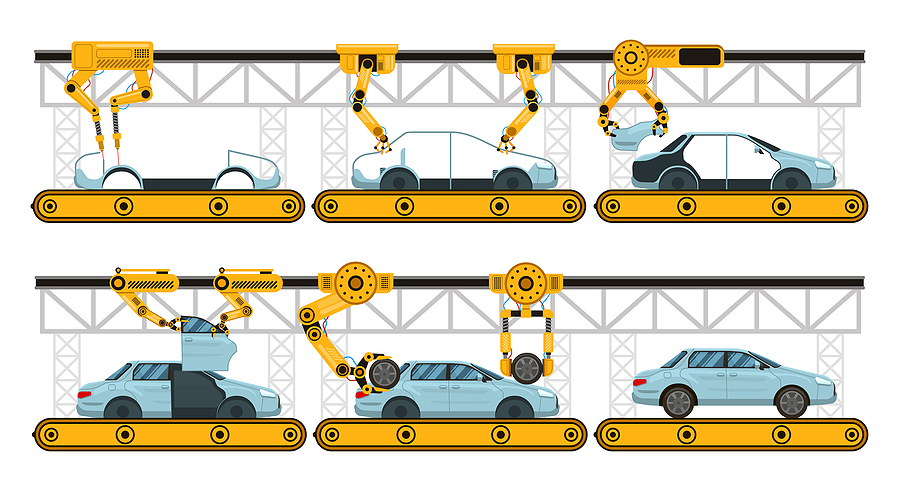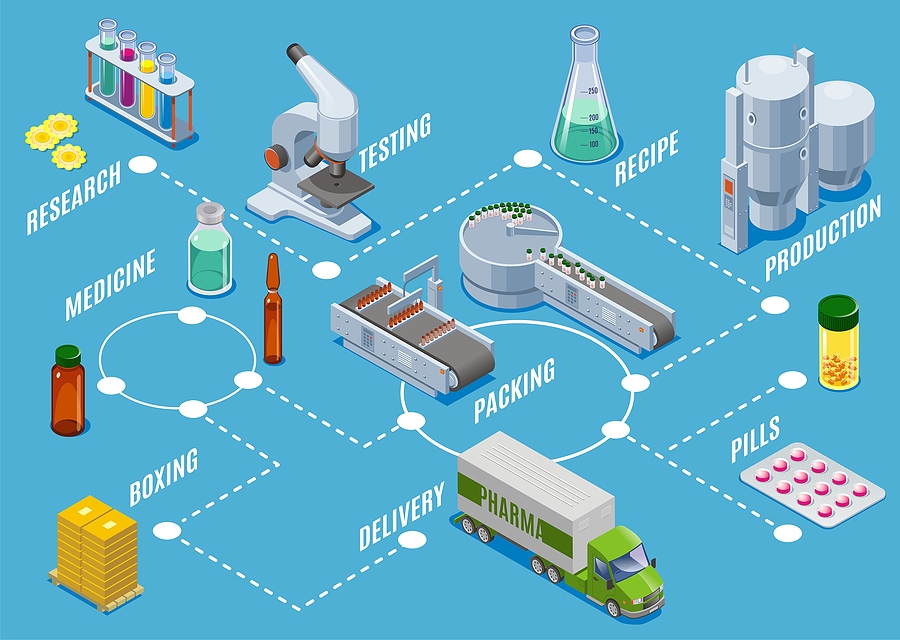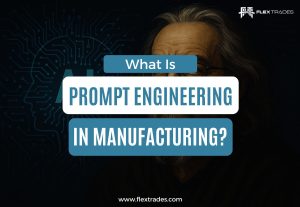As a Technical Manager at FlexTrades, I don’t work on the production or manufacturing floor, but I do work very closely with those who do. I love learning about the various production and manufacturing processes that directly affect my life as a consumer and user. With that said, there are two types of production and manufacturing: Discrete Manufacturing & Process Manufacturing. I’m here to tell you all about them!
Discrete Manufacturing
Discrete Manufacturing is the process of adding individual parts and components into one system or structure to create a final product. The parts and components can be individual in nature or a sub-assembly of the final product.
For example: Consider the manufacturing of a vehicle. Each section of a vehicle is individual in nature and created via machining, assembly, or welding operations (tire, engine, side panel, bumper, seats, steering wheel, wiring). These sections may come as one unit (side panel) or as an assembly (engine). These components or assemblies are then put together in a sequential manner to build the final product (vehicle). Additionally, we can easily disassemble the final product to determine and identify the individual components or assemblies used to create it.
Common job titles include: Warehouse Operators, Machine Operators, Machinists, Assemblers, Welders, Quality Inspectors.

Process Manufacturing
Process Manufacturing is manufacturing that occurs in bulk quantities, such as pharmaceuticals, paints, foods, and beverages. In this process, there is a chemical conversion occurring among ingredients rather than materials. This process is based on formulas and recipes. Unlike discrete manufacturing, it is difficult to identify the individual parts that make up the final product. Additionally, the ingredients that make up the product are difficult to disassemble and reuse.
For example: Consider the manufacturing of shampoo. There are a multitude of ingredients in shampoo including water, detergents, surfactants, polymers, silicones, a wide variety of preservatives, fragrances, dyes, and many other additives or preservatives. The average shampoo has 10-30 ingredients. This multitude of ingredients are poured into batch tanks, mixed and blended, heated and cooled in a formulaic and sequential manner, and then packaged. Unlike the vehicle in the example above, once the shampoo is blended, it’s difficult to separate the ingredients to determine the individual ingredients utilized to make it.
Common job titles include: Line Operators, Machine Operators, Warehouse Operators, Batch Makers, Process Technicians, Compounders, Mixers, Packers, Quality Control Inspectors.

As I said, I don’t work directly on a manufacturing floor, but manufacturing is great nonetheless. If you’re thinking about working in manufacturing, check out this video about Manufacturing Positions and Careers!








